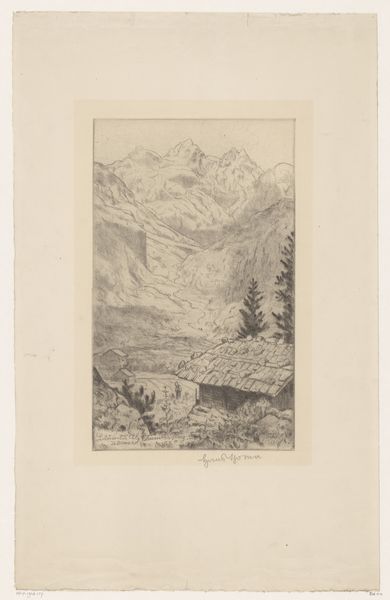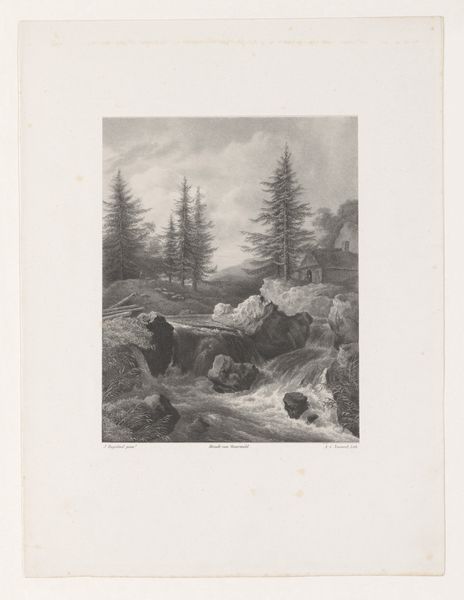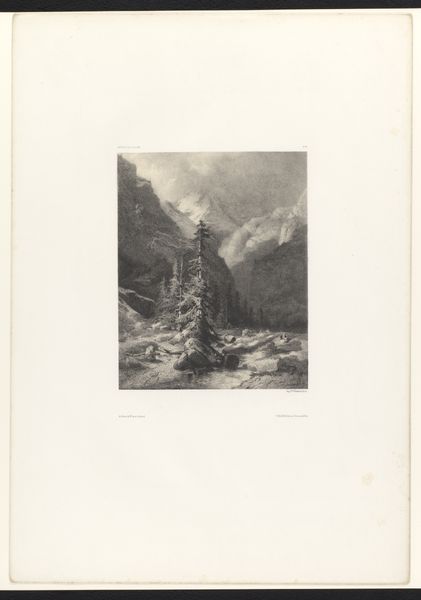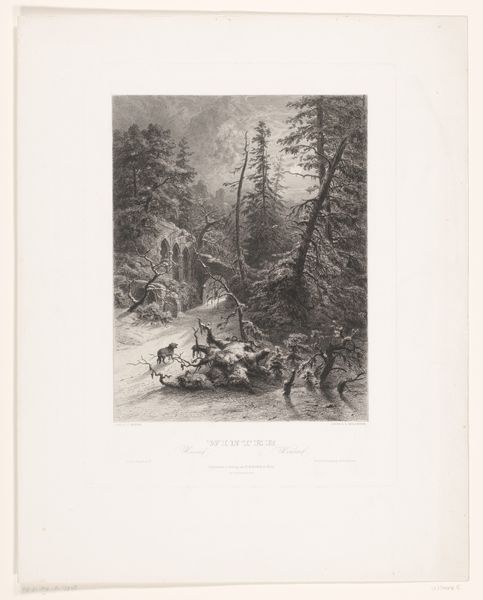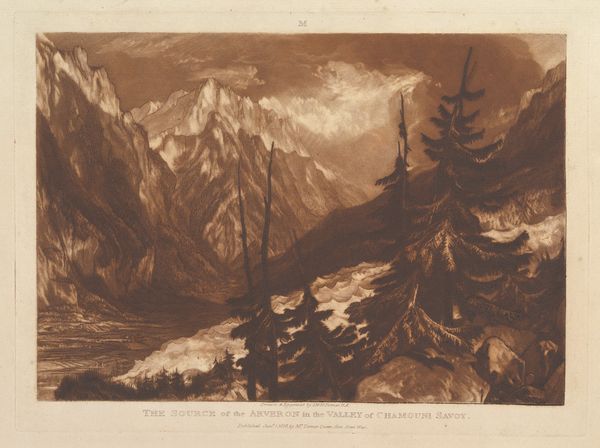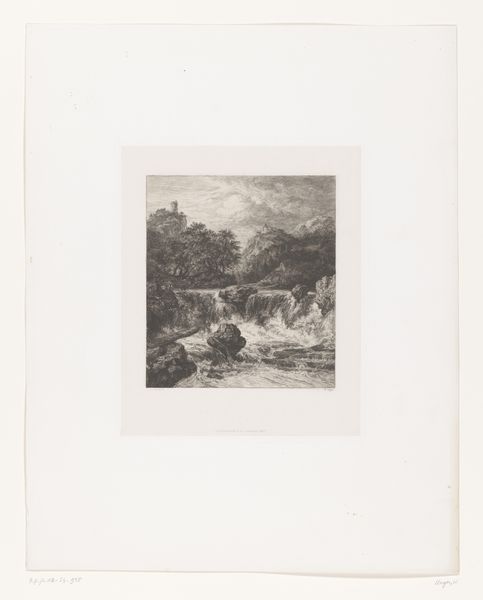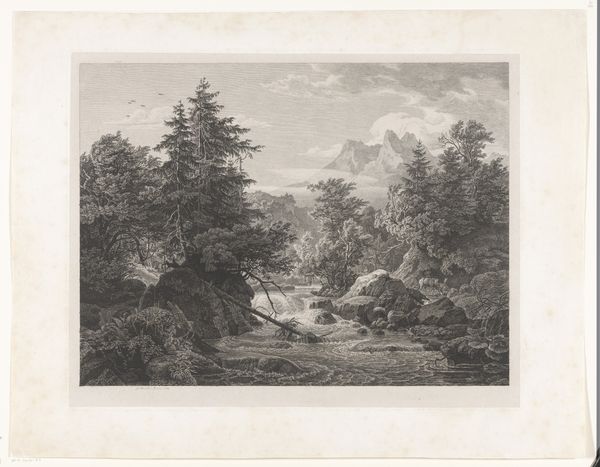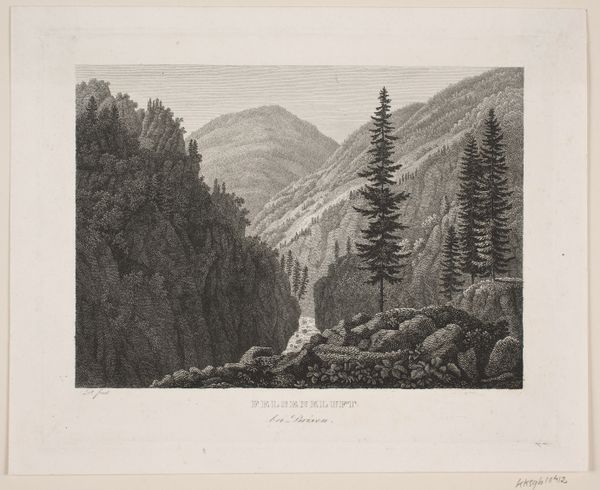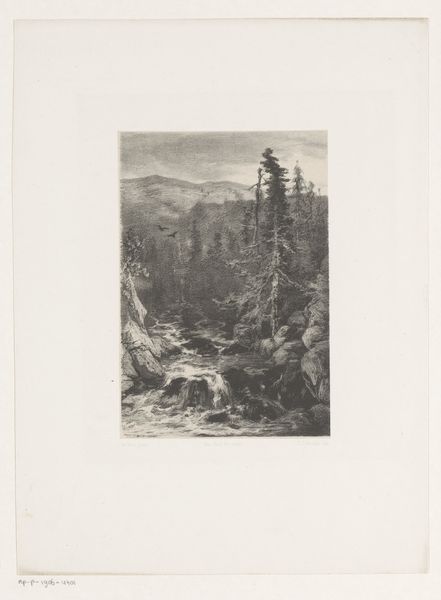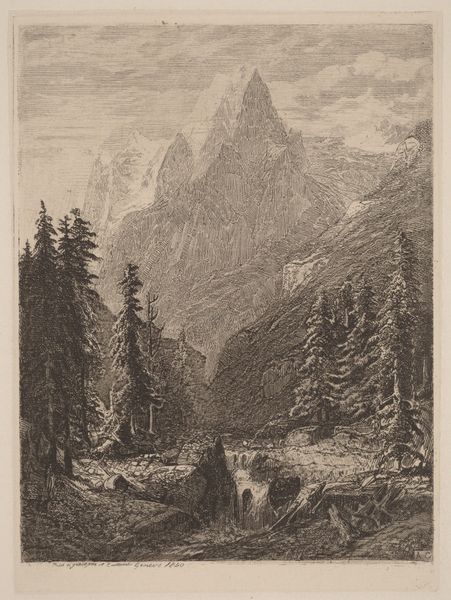
Dimensions: height 270 mm, width 218 mm
Copyright: Rijks Museum: Open Domain
Editor: This is "Waterval in Noorwegen," a print by Carl Eduard Onken, created sometime between 1861 and 1934. The details are incredible. It almost looks like a photograph, but the print makes it feel older, adding a sense of timelessness. How would you interpret this work through a more technical lens? Curator: Initially, observe how Onken uses linear perspective and tonal gradations to achieve depth within the composition. Note the positioning of the waterfall itself; how does its diagonal placement contribute to the overall dynamism, preventing the landscape from becoming static? Editor: That’s interesting, I was mostly drawn to the details and the old-fashioned style, but now I see that it makes the entire piece so much more energetic. Is the framing significant? Curator: Precisely. The framing—observe the darkened rocks and trees in the foreground—serves as a repoussoir, thrusting the distant mountains and cascade into sharper relief. Consider how the engraver manipulates line weight to differentiate textures, from the rough bark of the trees to the misty spray of the waterfall. How does the formal organization contribute to the artwork’s success? Editor: I hadn't considered the variance of line weight before! That makes the trees look so textured. Now I’m seeing the intentionality behind even what seems like a simple landscape. Thank you, I feel I'm now more well-equipped to read the syntax of art more completely! Curator: Remember that a work is often best accessed with a formal fluency first; any subsequent symbolic reading depends on it. The key is always a careful, meticulous looking.
Comments
No comments
Be the first to comment and join the conversation on the ultimate creative platform.
